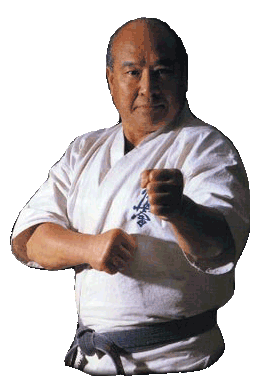

He even has spent some time alone in the wilderness observing wild animals, improving, developing, and mastering his style. Over the years he was also studying Judo and Goju-ryu. Sosai was a student of Master Gichin Funakoshi. It is the first Okinawan full-contact karate style developed by Masutatsu Oyama (1923-1994). Kyokushin means "the ultimate, extreme truth". The request came directly from the Japanese government as a military training but very quickly karate became popular in the entire country.
/cdn.vox-cdn.com/uploads/chorus_image/image/2222179/sosai.0.png)
In 1900 Gichin Funakoshi the founder of Shotokan Karate spread the art to Japan. The style spread North to Mongolia, South to Korea, and East to Okinawa. In Shaolin Bhodidarma was teaching Zen and Shorin Kempo. That way they were able to defend themselves from wild animals and bandits that tried to pry on them. It was quiet common for the monks to be skilled in martial art regardless the love an peace they carried out to the people. About one thousand years ago a Buddhist monk named Bhodidarma took a missionary venture to China. The very roots of karate though dwell in India and the philosophy of Zen. Mesopotamia 4000 years ago, today the Middle East (Iran, Iraq, Syria, and Turkey) is considered to be the cradle of martial arts. Glove karate rules are used in Kyokushin Karate Iran.Krate means "empty hand" and was introduced in Japan by Gichin Funakoshi in 1916. Kyokushin is the basis of glove karate, a knockdown karate format wearing boxing gloves and allowing punches to the head. The influence of Kyokushin can be seen in the K-1 kickboxing tournament that originated out of the Seidokaikan karate organization, which is an offshoot from Kyokushin. Kickboxing has been seen as a natural progression for kyokushin competitors and many of Japan’s top kickboxers have started in knockdown karate. Kyokushin has had an influence on many other styles. The knockdown karate competition format is now used by other styles. Karate styles that originated in Kyokushin, such as Ashihara Karate, Budokaido, Godokai, Enshin Karate, Seidō juku, Musokai, Shidōkan, World Oyama and Seidokaikan, are also knockdown styles and use slight variations of the competition rules.Ī few styles (Kansuiryu Karate and Byakuren) originated independently of Kyokushin and have adopted the competition format.Kokondo is derived from Kyokushin, albeit without a strong focus on competition with the emphasis rather on realistic goshin-jutsu (self-defense). Some styles originating in Kyokushin (Jushindo, Daido Juku, Kudo, Zendokai) have changed to mixed martial arts rules. This concept has less to do with the Western meaning of truth rather it is more in keeping with the bushido concept of discovering the nature of one’s true character when tried. One of the goals of kyokushin is to strengthen and improve character by challenging one’s self through rigorous training. Kyokushinkai, roughly translated, means “Association for Ultimate Truth”. Translated, kyoku means “ultimate”, shin means “truth” or “reality” and kai means “to join” or “to associate”. Oyama chose the kanji of Kyokushinkai (極真会) to resemble the samurai sword safely placed in its sheath.
#THE KYOKUSHIN WAY MAS OYAMA FULL#
In 1975, The First World Full Contact Karate Open Championships were held in Tokyo. World Championships have been held at four-yearly intervals since. All-Japan Championships have been held at every year. In 1969, Oyama staged The First All-Japan Full Contact Karate Open Championships and Terutomo Yamazaki became the first champion. Many students, including Steve Arneil, Jon Bluming, and Howard Collins, traveled to Japan to train with Oyama directly. Oyama also sent instructors to other countries such as the Netherlands (Kenji Kurosaki), Australia (Mamoru Kaneko and Shigeo Kato), the United States ( Miyuki Miura, Tadashi Nakamura, Shigeru Oyama and Yasuhiko Oyama), Great Britain ( Steve Arneil), Canada (Tatsuji Nakamura) and Brazil (Seiji Isobe) to spread Kyokushin in the same way. After that, word of mouth would spread through the local area until the dojo had a dedicated core of students. The instructor would move to that town and demonstrate his karate skills in public places. Oyama would choose an instructor to open a new dojo. Oyama hand-picked instructors who displayed ability in marketing the style and gaining new members.

After formally establishing the Kyokushinkaikan in 1964, Oyama directed the organization through a period of expansion.


 0 kommentar(er)
0 kommentar(er)
